Junkyard Find: 1972 Saab 99

When the arms manufacturer known as Svenska Aeroplan Aktiebolaget built its first production automobile, the goofy-looking 1950 Saab 92, that company's best-known product was the goofy-looking fighter jet known as the "Flying Barrel." Both the aircraft and cars got the job done, but it wasn't until the late 1960s that Saab built a jet that looked just as cool as the hippest Lockheeds and Mikoyan-Gureviches. At around the same time, Saab introduced its first car that wasn't viewed by non-Scandinavians as an oddball machine for eccentrics: The 99. Here's one of those cars, found in a self-service yard just south of Denver.
The 99 has been a tough vehicle for me to find during my junkyard travels; prior to today's '72, I'd only documented two discarded 99s. In fact, I'd found more Saab 96s in car graveyards up to that point (plus a single 92, though that was in a lichen-covered yard in northern Sweden). I don't recall seeing many 99s on the street as a youngster, despite having spent my formative automotive years in the Swedish-car-crazed San Francisco Bay Area.
The Saab 99 was built from 1968 through 1984, with sales in the United States during the 1969 through 1980 model years.
Just as the iconic Volvo 240 was really a reworking of the late-1960s Volvo 140, so was the iconic Saab 900 an update of its 99 ancestor. In fact, if you take apart a 1993 Saab 900, you'll find just about every major feature of the 1968 Saab 99's design still present ( later 900s were built on an Opel platform, making them siblings to the Saturn L-Series cars).
Saab had been reluctant to make the jump from two-stroke to four-stroke car engines, finally buying Ford Taunus V4s to put in new 96s starting in 1967. For the 99, Saab partnered with Triumph to develop an overhead-cam straight-four engine. Slanted over at 45 degrees from the vertical and with a Citroën-style transmission-in-front longitudinal engine mounting, this front-wheel-drive rig was weird enough to please the Trollhättanites while still delivering a good driving experience.
Triumph put this engine in the Dolomite and TR7, and used it as the basis for the troublesome Stag V8. Saab reworked it for greater reliability, finally producing a thorough redesign in 1981. The one in this car (if it's the original unit) displaces 1,854 CCs and was rated at 97 horsepower.
This car is in rough, weatherbeaten condition, and it's full of car parts plus random electronic junk.
I'm pretty sure that it was a parts car bought by a Denver-area Saab aficionado and used as outdoor storage for a decade or three.
I found a bunch of Bay Area newspapers from early 1989 inside. Bought in California 33 years ago, driven to Colorado, and parked forever? We'll never know.
The mid-80s-vintage Pioneer KE A330 cassette deck fits the parked-since-1989 theory.
Thanks to the five-digit odometer, it's impossible to say how many miles this car drove during its life. I'm guessing 122,135 miles looks about right.
Just about every Saab I find in a Colorado junkyard still has old-timey studded snow tires in the trunk. This car is no exception.
Amazingly, an automatic transmission was available as a $200 option (that's about $1,440 in 2022 dollars) on the 1972 Saab 99. This car has the four-on-the-floor manual that went into nearly all 99s.
The sticker price on the 1972 Saab 99 two-door sedan was $3,395, or about $24,475 now. Americans had a surprising number of choices for small front-wheel-drive cars that year; shoppers who didn't want the Saab 99 could choose from such not-so-mainstream offerings as the Fiat 128, Renault 16, Renault 12, Audi Fox, Austin America, Subaru 1400, various Lancias (for really eccentric types), Honda 600, and (of course) the Saab 96 and Sonett. The Honda Civic first appeared here as a 1973 model, followed the next year by the Datsun F-10, and little front-drivers became less suspect in the eyes of the squares after that.
I'm pretty sure headlight covers like this were illegal in 1972 America.
Rough 99s like this aren't worth real money (even very clean original ones barely squeak into five-figure values), so it was unlikely that anyone would have fixed this one up and put it back on the road. I've been checking in on this car over the last month, and it appears that nobody has pulled any parts from it (the same thing happened with a 1976 Saab 99 I found in a nearby yard last fall; it went to The Crusher essentially intact).
You need Saab 99 safety!
[Images by the author]
Become a TTAC insider. Get the latest news, features, TTAC takes, and everything else that gets to the truth about cars first by subscribing to our newsletter.

Murilee Martin is the pen name of Phil Greden, a writer who has lived in Minnesota, California, Georgia and (now) Colorado. He has toiled at copywriting, technical writing, junkmail writing, fiction writing and now automotive writing. He has owned many terrible vehicles and some good ones. He spends a great deal of time in self-service junkyards. These days, he writes for publications including Autoweek, Hagerty and The Truth About Cars.
More by Murilee Martin
Latest Car Reviews
Read moreLatest Product Reviews
Read moreRecent Comments
- 28-Cars-Later “1. The Industrial Revolution and its consequences have been a disaster for the human race. They have greatly increased the life-expectancy of those of us who live in “advanced” countries, but they have destabilized society, have made life unfulfilling, have subjected human beings to indignities, have led to widespread psychological suffering (in the Third World to physical suffering as well) and have inflicted severe damage on the natural world. The continued development of technology will worsen the situation. It will certainly subject human beings to greater indignities and inflict greater damage on the natural world, it will probably lead to greater social disruption and psychological suffering, and it may lead to increased physical suffering even in “advanced” countries....It would be better to dump the whole stinking system and take the consequences”― Theodore J. Kaczynski, Ph.D., Industrial Society and Its Future, 1995.
- FreedMike "Automotive connectivity has clearly been a net negative for the end user..."Really? Here's a list of all the net negatives for me:1) Instead of lugging around a road atlas or smaller maps that do nothing but distract me from driving, and don't tell me where to go once I've reached Point B, I can now just ask my car's navigation system to navigate me there. It'll even tell me how long it will take given current traffic conditions. 2) Instead of lugging around a box of a dozen or so cassette tapes that do nothing but distract me from driving, I can now just punch up a virtually endless library of music, podcasts, or audiobooks on the screen, push a button, and play them. 3) I can tell my car, "call (insert name here)" and the call is made without taking my hands off the wheel.4) I can tell my car, "text (insert name here)" and the system takes my dictation, sends me the text, and reads off any replies. 5) I can order up food on my screen, show up at the restaurant, and they'll have it waiting for me. 6) I can pull up a weather map that allows me to see things like hailstorms in my path. 7) If I'm in trouble, I can push a "SOS" button and help will be sent. 8) Using my phone, I can locate my car on a map and navigate to it on foot, and tell it to turn on the heat, A/C, or defrosters.None of these are benefits? Sorry, not sorry...I like them all. Why wouldn't I? Consumers clearly also like this stuff, and if they didn't, none of it would be included in cars. Now, maybe Matt doesn't find these to be beneficial. Fair enough! But he should not declare these things as a "net negative" for the rest of us. That's presumption. So...given all that, what's the answer here? Matt seems to think the answer is to "unplug" and go back to paper maps, boxes of music, and all that. Again, if that's Matt's bag, then fair enough. I mean, I've been there, and honestly, I don't want to go back, but if that's his bag, then go with God, I guess. But this isn't the solution for everyone, and saying otherwise is presumption. Here's a solution that DOES work for everyone: instead of throwing the baby out with the bathwater, clean the bathwater. You do that very, very simply: require clear, easy-to-understand disclosure of data sharing that happens as the result of all these connected services, and an equally clear, easy-to-understand method for opting out of said data sharing. That works better than turning the clock back to those thrilling days of 1990 when you had to refer to handwritten notes to get you to your date's house, or ripping SIM cards out of your car.
- Funky D What is the over-under for number of recalls in the first 5 years of ownership?
- Normie Dayyum! Great White Woman!The car, I mean. I could feel kinda safe in it.
- Slavuta "The telescreen received and transmitted simultaneously. Any sound that Winston made, above the level of a very low whisper, would be picked up by it; moreover, so long as he remained within the field of vision which the metal plaque commanded, he could be seen as well as heard. There was of course no way of knowing whether you were being watched at any given moment. " --- 1984



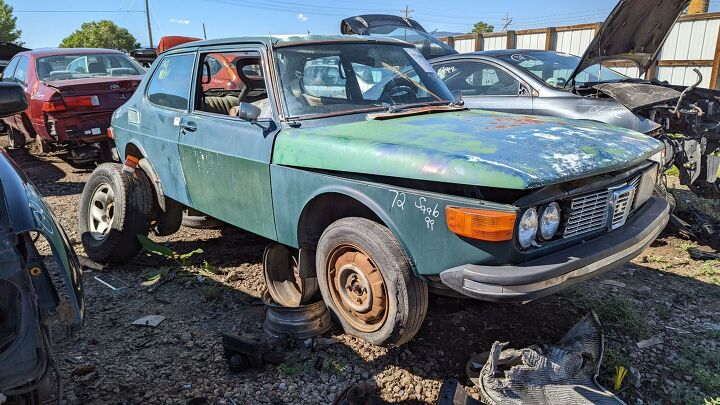























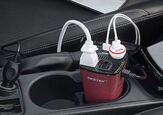




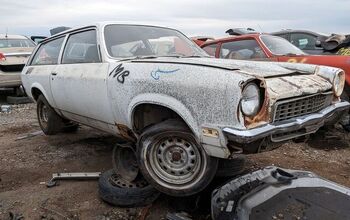
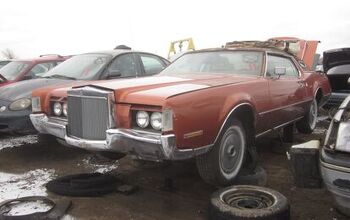
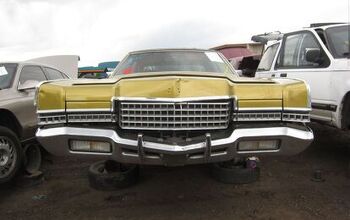













Comments
Join the conversation
Both the aircraft and cars got the job done, but it wasn't until the late 1960s that Saab built a jet that looked just as cool as the hippest Lockheeds and Mikoyan-Gureviches.
Uh, you seem to have forgotten the Saab 35 Draken, first flight 1955.
What junkyard is this in? Id love to save the poor thing